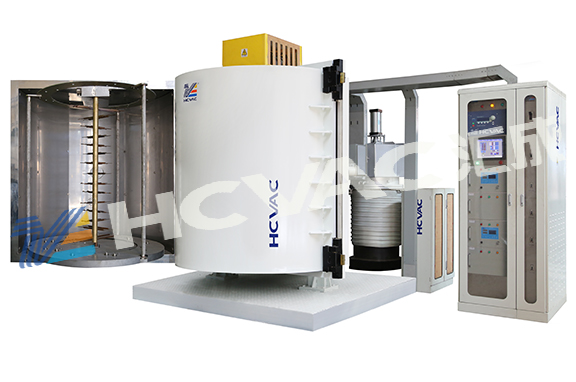Evaporation pvd coating machines are divided into resistance evaporation coating machines, electron beam evaporation coating machines, and induction evaporation coating machines according to coating technology. Resistance evaporation coating machines are the most common and widely used in the market. Although the resistance evaporation process is the most common and widely used, But for outsiders, it is still very unfamiliar. Below, the editor of Huicheng Vacuum will introduce in detail the coating principle of the resistance evaporation vacuum coating machine. I hope it can help you:

The vacuum evaporation coating method is to heat the raw materials to be formed into a thin film in the evaporation container in a vacuum chamber, so that the atoms or molecules vaporize and escape from the surface to form a vapor flow, which is incident on the surface of the solid (called the substrate or substrate). A method of condensation to form a solid film.
Use tantalum, molybdenum, tungsten and other high melting point metals to make an evaporation source of appropriate shape, load the material to be evaporated on it, let the air flow pass through, directly heat and evaporate the evaporation material, or put the material to be evaporated into alumina and oxidize it. Indirect heating evaporation is carried out in beryllium and other crucibles, which is the resistance heating evaporation method.
The coating machine that uses resistance heaters to heat and evaporate has a simple structure, is cheap, and is reliable to use. It can be used for evaporation coating of materials with not too high melting points. It is especially suitable for mass production that does not require high coating quality. So far, The resistive heating evaporation process is still widely used in the production of aluminum-coated mirrors.
The disadvantages of the resistance heating method of the resistance
evaporation pvd coating machine are: the maximum temperature that the heating can reach is limited, and the life of the heater is also short. In recent years, in order to improve the service life of heaters, conductive ceramic materials synthesized from boron nitride with longer service life have been used as heaters at home and abroad. According to Japanese patent reports, a crucible can be made from a material composed of 20% to 30% boron nitride and a refractory material that can be fused with it, and a layer of zirconium containing 62% to 82% is coated on the surface, and the rest is It is a zirconium-silicon alloy material.



